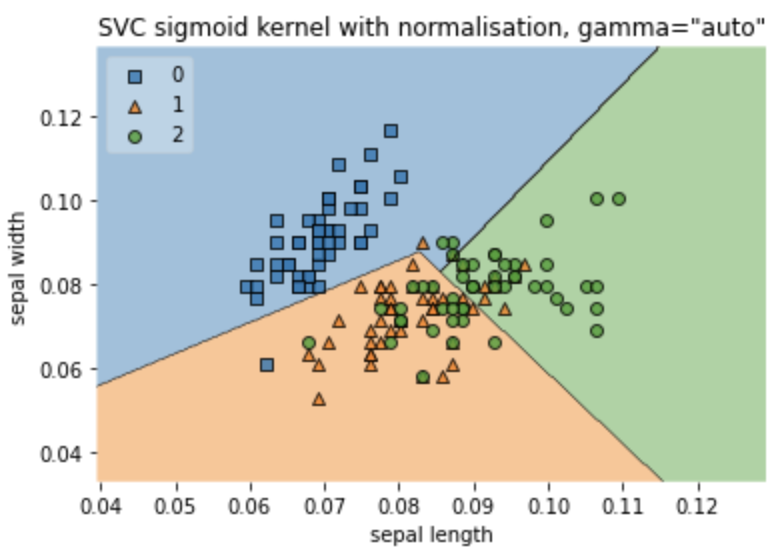I am testing an SVM with a sigmoid kernel on the iris data using sklearn and SVC. Its performance is extremely poor with an accuracy of 25 %. I'm using exactly the same code and normalizing the features as https://towardsdatascience.com/a-guide-to-svm-parameter-tuning-8bfe6b8a452c (sigmoid section) which should increase performance substantially. However, I am not able to reproduce his results and the accuracy only increases to 33 %.
Using other kernels (e.g linear kernel) produces good results (accuracy of 82 %). Could there be an issue within the SVC(kernel = 'sigmoid') function?
Python code to reproduce problem:
##sigmoid iris example
from sklearn import datasets
iris = datasets.load_iris()
from sklearn.svm import SVC
sepal_length = iris.data[:,0]
sepal_width = iris.data[:,1]
#assessing performance of sigmoid SVM
clf = SVC(kernel='sigmoid')
clf.fit(np.c_[sepal_length, sepal_width], iris.target)
pr=clf.predict(np.c_[sepal_length, sepal_width])
pd.DataFrame(classification_report(iris.target, pr, output_dict=True))
from sklearn.metrics.pairwise import sigmoid_kernel
sigmoid_kernel(np.c_[sepal_length, sepal_width])
#normalizing features
from sklearn.preprocessing import normalize
sepal_length_norm = normalize(sepal_length.reshape(1, -1))[0]
sepal_width_norm = normalize(sepal_width.reshape(1, -1))[0]
clf.fit(np.c_[sepal_length_norm, sepal_width_norm], iris.target)
sigmoid_kernel(np.c_[sepal_length_norm, sepal_width_norm])
#assessing perfomance of sigmoid SVM with normalized features
pr_norm=clf.predict(np.c_[sepal_length_norm, sepal_width_norm])
pd.DataFrame(classification_report(iris.target, pr_norm, output_dict=True))

